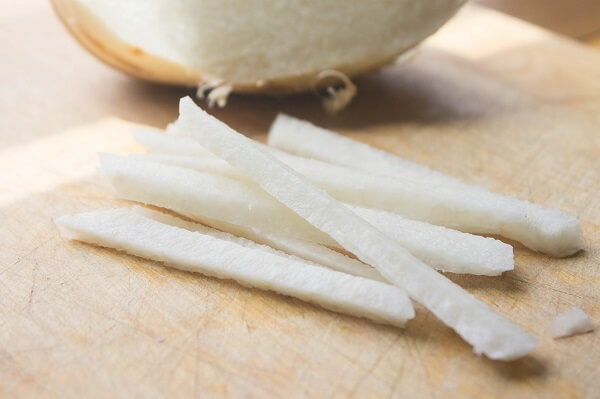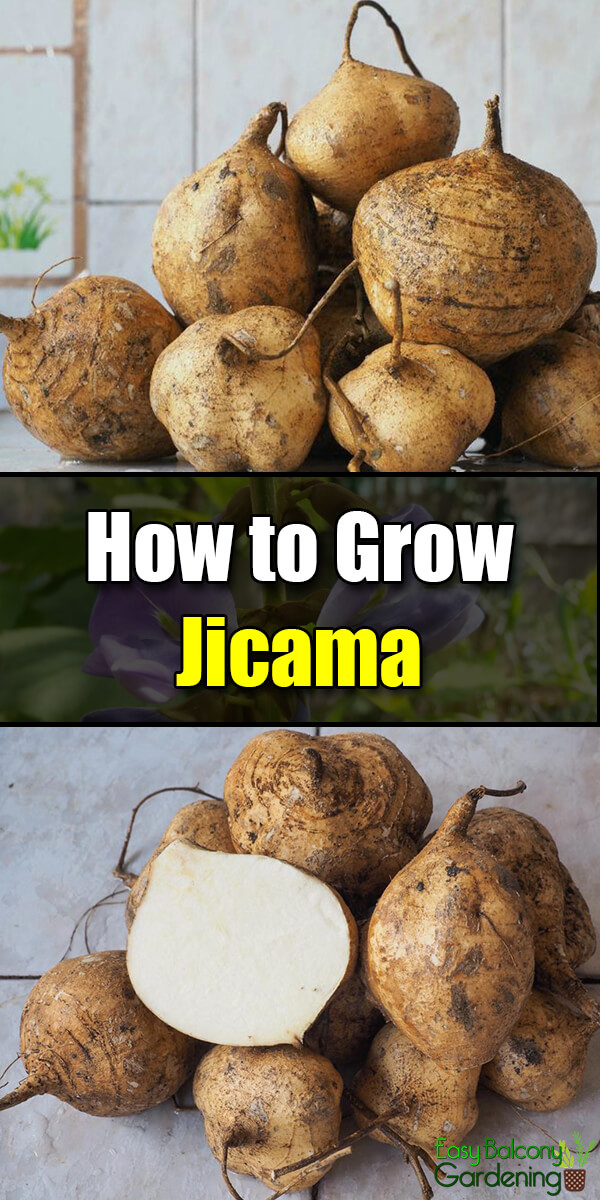Jicama, also referred to as the yam bean, has a tuberous root with a course, yellowish skin that should be peeled prior to usage. The root’s interior is white, and has a crispy, juicy, sweet flavor somewhat like that of an apple or a pear. Although the jicama can be used cooked in soups and stir fries, it is usually eaten raw and can be eaten plain. In its raw form, the jicama is good for vegetable platters, lettuce rollups, juiced drinks, fresh salads, etc. You can also use the jicama for salsas and what have you. Just use your imagination! The biggest grown jicama tubers on record weighed approximately 50 lbs (23 kgs). When purchasing jicama, only choose firm tubers with dry roots. Avoid those that are bruised and have wet spots that are soft to the touch. Settle for medium-sized jicama for better flavor.
Cultivation
Jicama can be grown all year round. When planted in the late spring, you will have more robust tubers come wintertime. The jicama planted in the summer may have smaller tubers but they will also be more flavorful. Choose a location that enjoys full sun, with loose, well-drained soil. The location should be shielded from too much rainfall. Being a tropical plant, it takes nine months of warmth to bring good-size tubers to maturity. If your location cannot sustain that kind of lengthy warm period, start your jicama seeds indoor about ten weeks before the last frost in the spring. Transplant the jicama plants after the last danger of frost, when the weather is warm.
Pest Control
Jicama has a natural insecticide component called rotenone in its above-the-ground vines, making it able to protect itself from harmful pests. This substance is also toxic to humans and pets. Like the potatoes, you are to avoid eating any of the above-the-ground jicama parts. Plant the jicama where you would not have any humans or pets that can accidentally eat the exposed parts.
Nutrition
Jicama’s composition is mostly water – from 80% to 90%. It has trace amounts of lipids and proteins. It is fat free. It also is a good source of Vitamin C, fiber, and potassium. One cup of cubed jicama contains approximately 45 calories only.
Storage
Store jicama in a dry location. The ideal temperature is between 55°F and 60°F. When stored in this condition, the jicama will keep for about two months. Put fresh jicama for quick use in a plastic bag in the refrigerator. They will keep fresh for up to fourteen days.








